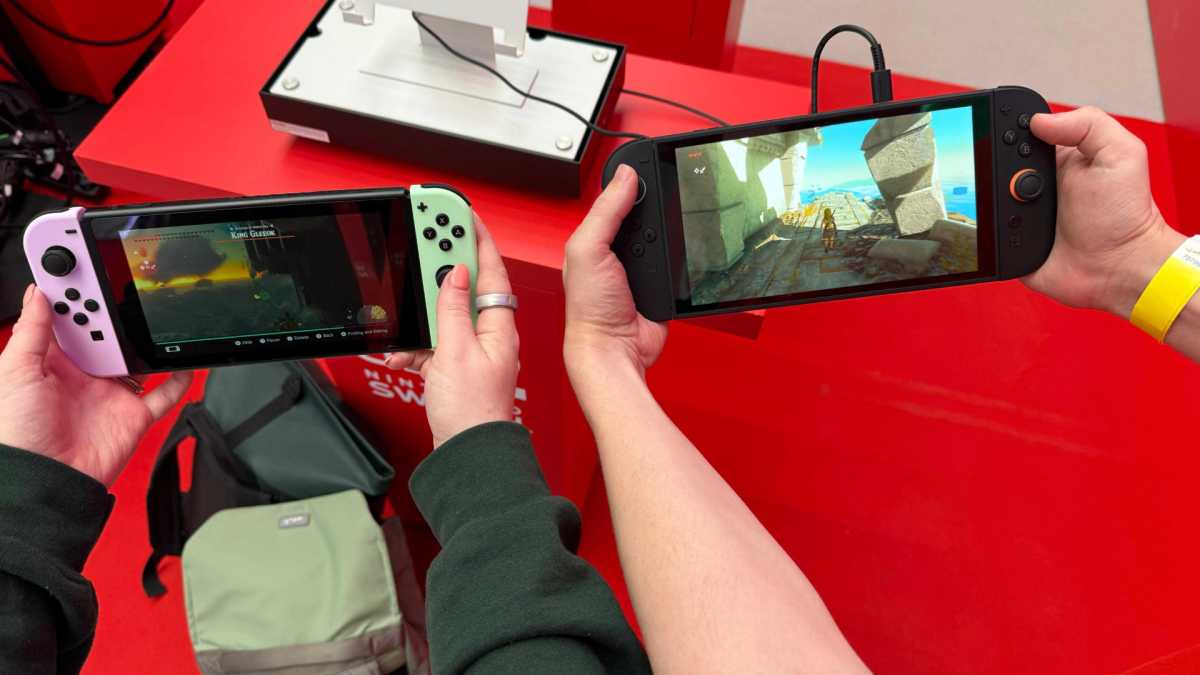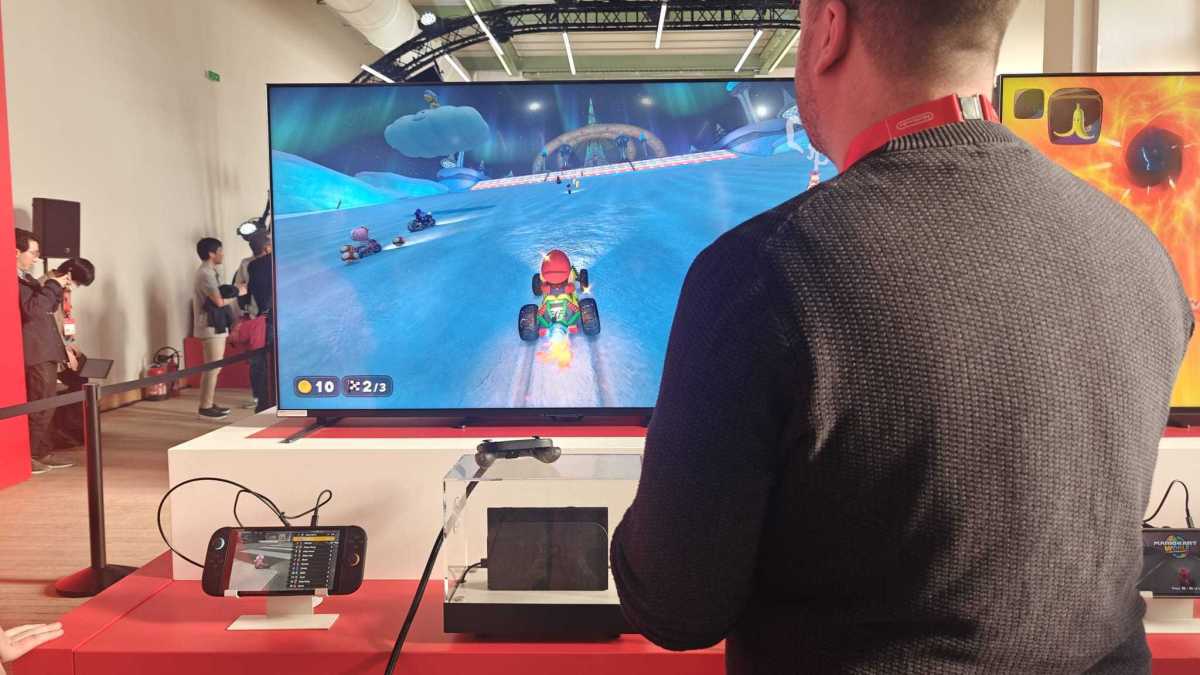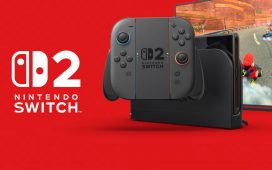The graphics of the Nintendo Switch 2 have been one of the most talked-about features leading up to the launch. After spending some time seeing them for myself in Paris, I can say it’s worth the wait… but maybe not for the reason you think.
While yes, the console now supports 4K graphics in docked mode, that’s not what I took notice of the most. It’s the support for 60fps, a pivotal upgrade over the 30fps seen on the original Switch for most titles.
The result is smoother, crisper visuals that make such a difference to the gameplay experience. This was especially noticeable when testing out the dedicated Switch 2 version of The Legend of Zelda: Tears of the Kingdom, where Link’s movements were so much snappier when compared to video footage on a personal OG Switch.

Hannah Cowton-Barnes/Foundry
Other environmental visuals – like the splash of water, or the ominous red Calamity Ganon spores – also shine so much more on this new console.
Admittedly, these new games have also benefitted from other boosts, including HDR support for brighter and bolder colours, a 120Hz refresh rate and of course that extra horsepower under the hood to ensure a smoother experience.
Nonetheless, the lack of choppiness is so welcome. I particularly noticed this when playing the demo of the Switch 2 version of Breath of the Wild, breezing through the lush Korok forest without any popping or lag in sight.
And it’s not just Zelda where those extra frame rates come into play. My first hands-on experience was with Mario Kart World, and I found I was able to react quicker to red shells and the other various obstacles thanks to those lightning-fast visuals.
It’s harder to do a direct comparison for Mario Kart World and Mario Kart 8, as it’s a brand-new game with fresh mechanics such as changing weather and new racecourses. What I can say is that it looks gorgeous, and I estimate it will be one of – if not the biggest – games on this console.

Hannah Cowton-Barnes/Foundry
More importantly, both Zelda and Mario looked impressive while docked and in handheld mode. If you were one of the people disappointed that this screen is LCD rather than OLED and 1080p, let me assure you that you’ll still see a marked improvement from the last generation, especially thanks to that larger 7.9-inch display (which, by the way, feels no heavier to hold).
I also got confirmation from a Nintendo representative that the new Mario Kart runs up to 60fps in handheld mode, though they weren’t able to comment specifically on the frame rate of either of the Zelda titles at this time, only that frame rates were smoother.
There’s still no word about an OLED version of the Switch 2 – as a reminder, the variant for the original model took four years to hit shelves after the Switch 1, so let’s take things one step at a time.
So, if you’re keen to upgrade to these new and improved versions of the open-world Zelda games, how much will it cost you?
UK and US pricing haven’t yet dropped, but Metro has reported that conversions from Japanese Yen figure translate to roughly between £8/$10 and £15/$20, depending on the game, with both Zelda titles clocking in at the lower end.
However, keep in mind that conversations aren’t always accurate estimates – the prices could be higher. As Mario Kart World is a brand-new title, it costs $80 in the US and starts from £67 in the UK, though there are bundles available with the new console if you want a day-one title.
Ready to buy one? See our guide to the best Nintendo Switch 2 pre-order deals.
Nintendo hosted my trip to Paris. I accepted, as there were no alternative ways to get hands-on time with the Switch 2 at launch. There were no preconditions on what I write or how I evaluate the device.









